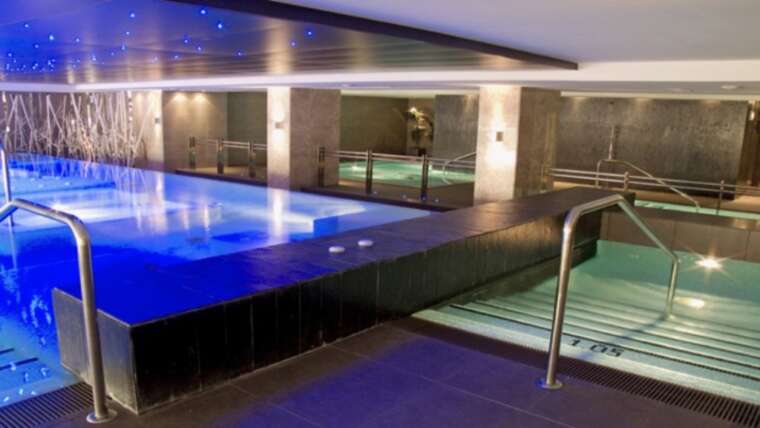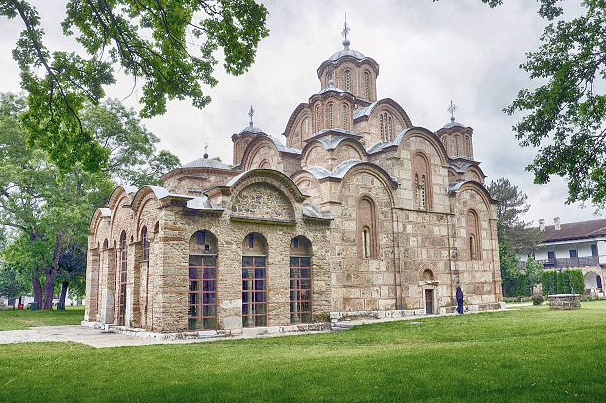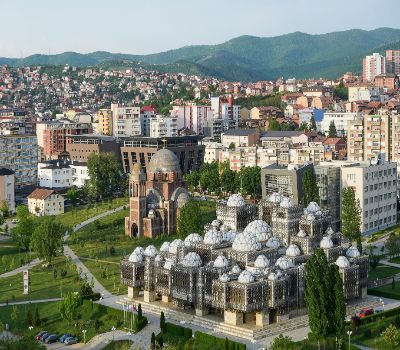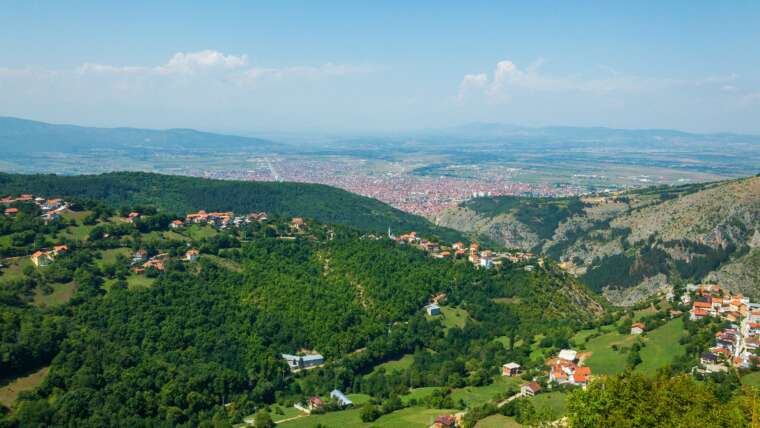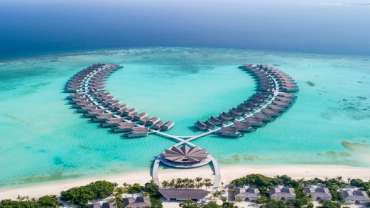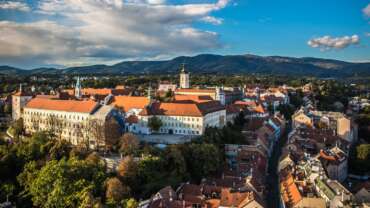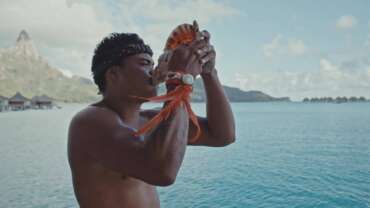Kosovo - Be in Kosovo
Planning a holiday to Kosovo? Have a day off in the small Balkan state? The country has a lot to offer. Beautiful landscapes, high mountains, old city centers, waterfalls and ancient religious buildings are yours to visit in Kosovo. Here are some Kosovo tourism
highlights.
Kosovo, officially the Republic of Kosovo, is a partially-recognised state and disputed territory in Southeastern Europe. On 17 February 2008, Kosovo unilaterally declared its independence from Serbia. It has since gained diplomatic recognition as a sovereign state by 98 UN member states.
The name Kosovo is derived from a Serbian place-name meaning “field of blackbirds.” After serving as the centre of a medieval Serbian empire, Kosovo was ruled by the Ottoman Empire from the mid-15th to the early 20th century, a period when Islam grew in importance and the population of Albanian speakers in the region increased. In the early 20th century Kosovo was incorporated into Serbia (later part of Yugoslavia). By the second half of the century, the largely Muslim ethnic Albanians outnumbered the predominantly Eastern Orthodox Serbs in Kosovo, and interethnic tensions frequently roiled the province.
History of Kosovo
The ancient Illyrians are known as the Albanian predecessors and the initial inhabitants on the Balkan Peninsula which were followed by the Slavs in the 6th and 7th centuries. The country of Kosovo was ruled by Bulgaria from the 9th century up until the Serbs took control in the 12th century. In 1389, the Ottoman Empire Turks defeated the Serbs and absorbed Kosovo. Following the Ottoman Turks defeat, the Ottoman Empire ruled centuries until year 1913 which was when Serbia regained control over Kosovo as it became part of the Yugoslavia Federation. On February 17, 2008, Kosovo gained its independence from Serbia after another bloody war around the end of the 20th century.
Recent History
2003 – The first direct talks took place among Kosovar and Serbian leaders in October 2003, since the conflict of 1999.
2003 – Yugoslavia turned into Serbia-Montenegro in December 2003. The UN set out the conditions for the final status talks for Kosovo in 2005 which were given the name of “standards before status” by the condition of Kosovo making “sufficient progress” by meeting some international standards in relation to its laws, freedom of movement, democratic institutions and human rights.
2004 – The worst conflict took place between the Kosovars and Serbs in March 14-19 years after the clash of 1999. Aggression initiated by a drive-by shooting resulting in a Serb teenager’s death followed by three Albanian teenagers’ drowning in the Ibar River. It was argued and believed that these occurrences were used to arrange violence by the Serb extremist groups.
2005 – Talks for the final status of Kosovo were sponsored by the UN and chaired by the former President of Finland, Martti Ahtisaari.
2008 – Kosovo’s independence was declared by Kosovo’s Parliament on February 17, 2008; Kosovo – the Republic of Kosovo with partial recognition of the declaration. Kosovo is currently the second youngest country in the world and the youngest country in Europe.
2008 – Parliament adopts new constitution.
2010 – The International Court of Justice rules that Kosovo’s declaration of independence from Serbia in 2008 was not illegal under international law, in response to a complaint from Serbia that it had violated its territorial integrity.
The 1990’s
Throughout the 1990’s, armed unrest and ethnic tension rose as a result of the escalated nationalism among the division of Yugoslavia and the suspension of the Kosovo Assembly by Serbia. Ibrahim Rugova was elected as president of the republic that was self-proclaimed by the ethnic Albanians of Kosovo in disobedience with the Serbian authorities
1998 – Open clash and conflict took place between the Serbian Police and the Kosovo Liberation Army (KLA) a group which was established to fight the Serbian regime – requiring and demanding Kosovo to separate from the Federal Republic of Yugoslavia and gain its freedom.
1998 – September – An ultimatum to bring an end to the attacks on Kosovo Albanians was given by the North Atlantic Treaty Organization (NATO) to Milosevic.
1999 – NATO bombing of the Federal Republic of Yugoslavia took place between the period of March 24 and June 10, 1999, for the duration of which NATO attacked Serbia and Albanian paramilitaries the aggression with the Yugoslav forces. At that time an enormous displacement of approximately 1 million people of the Kosovar population took place.
1999 –Milosevic surrendered and accepted the peace conditions on June 3rd, 1999 where following this action, KFOR –a NATO force, started entering Kosovo. NATO’s mission was solely based on peacekeeping although it was preparing conflict conduct operation. An estimated of 12,000 victims were rooted by the war and 13,368 civilians were missing one year following the conflict.
20th Century
Throughout the Balkan Wars in 1912, the majority of Kosovo was taken over by the Serbian Kingdom apart from the Dukagjini area which was taken over by the Montenegrin Kingdom.
As the Communist regime of Tito was established, Kosovo was identified and stated as an autonomous region of the country of Serbia in year 1946 and later in 1963 became an autonomous province.
Many patriots were killed end imprisoned by the Communist government and such acts were culminated by the massacre of Tivar in which around 3000-4000 Kosovars were executed by machine-guns. As the Yugoslavia constitution was passed in 1974, Kosovo was virtually self-governed. As a result, all through the 1980’s, tensions among the Serbs and Albanians in the Kosovo area arose. The autonomy of Kosovo was then severely condensed by the Serbia-wide referendum in 1989.
Ottoman Empire (1455 to 1912)
The Ottoman Turks formed the Vilayet of Kosovo to be one of the Ottoman territories in addition to the bringing of Islam into the area. At the time the Ottoman Turks had absolute power in Kosovo and they ruled the region for approximately 500 years where numerous Slav acknowledged Islam and served under the rules of the Ottoman Turks.
One of the four vilayets with Albanians in 1878 formed the League of Prizren and was known as the Vilayet of Kosovo with the purpose of resisting the Ottoman rules and other invasions by newly-emerging nations in the Balkans. Coincidentally though, Prizren is today one of the most Turk-related and influenced cities of Kosovo.
Early History and the Middle-Ages
The Kosovo area was located in the eastern side of Illyria bordering on Thrace in century 4 BC. At that point in time, Kosovo was inhabited by the Thraco-Illyrian tribes of Dardania. In the distant ancient past, Dardania was the name of Kosovo’s region and was formed as a part of the Roman province of Moesia. The Balkans area was captivated within the Byzantine Empire in the 850’s after 6th and 7th century migrations took place in the area. The control of the Byzantine was then reasserted by Emperor Basil II who was known to be very forceful and powerful. Kosovo remained in the Serbian Empire from 1346 to 1371 as it was immersed into Serbia towards the end of the 12th century. The Serbian Prince army was defeated by the Ottoman Turks in the well-known Battle of Kosovo in 1389; the Ottoman Turks finally took control over the territory of Kosovo in the year of 1455.
People of Kosovo
Considering the history and artifacts, Kosovo was populated since the early ages. During the history, Kosovo has been through several occupations, wars, and migrations which all indicated the number of exact population. Based on the recent registrations, Kosovo has around 1,808,257 inhabitants. At present, Kosovo has the youngest population in Europe with the population density being close to 166.1 per square kilometer. According to CIA Worldfact Book, Albanians are the fastest growing ethnic group in Europe with 1.3 % growth rate per year.
Ethnic group division in Kosovo:
88% are Albanians
6% are Serbs
3% are Bosniaks and Gorani
2% are Roma, Ashkali and Egyptians
1% are Turks
Religion
Kosovo is not only known for being a multi ethnic country but also for its religious tolerance and coexistence. Even though the majority of population are Muslims, the religion was never a factor which destabilized the country. Ages ago, the Kosovar Albanian ethnics were chiefly Roman Catholic by religion. The religion changed, however, in the 14th century when the Ottoman Turks conquered Kosovo and introduced the new religion of Islam which many Albanian families found appealing and, in return, embraced in large amounts. At present, only around 3% of the Kosovar population is composed of the Roman Catholics.
The greater part of Kosovo’s population (Muslims) practice the mainstream known as Sunni Islam, however almost all of the population residing in the villages in the region has some families that are Shi’ite Muslims. There are additional various Islamic groups but are significantly smaller in size, such as the Bektashi dervish sector.
Even though the vast majority of Kosovar Muslims are not firmly religious or radical among their views, a great number of them practice the most common Islamic traditions, practices, and preventions such as the more common Islamic holidays and the ideal of not eating pork.
The greater part of the ethnic Albanian Kosovar population, including the communities consisting of the Bosniak, Gorani, Turkish, Roma, Egyptian and such, greatly support the practices and ideals of Islam. The ethnic Serb community population, however, chiefly belong to the Serb Orthodox religion. As far as the remaining Roman Catholic Albanian population, their main concentration and places of residence are in Prishtina, Klina, Peja, Gjakova, Prizren, and Vitija.
Main religions in Kosovo are:
Muslim 90 %
Serbian Orthodox 7%
Roman Catholic 3%
Languages spoken in Kosovo are:
Albanian (official)
Serbian (official)
Bosnian
Turkish
Roman
English – widely spoken especially by youth
German – widely spoken in general society
With approximately more than 90% of the population of Kosovo being ethnic Albanians, the Albanian language is recognized as an official language along with Serbian. Other languages including Turkish, Romani, and Bosnian are also spoken.
English is widely spoken, especially by youth. English is also taught at schools starting from primary education.
Albanian is an Indo-European language that is spoken by numerous inhabitants of the Albanian culture especially those bordering the Albanian and Kosovo countries. The language is divided into two-main dialects used depending on the geographical area of the inhabitants. The first dialect, Tosk, which derives from southern Albania, is mostly used in Albania, Italy, Greece and Turkey, whereas Gheg, the second, is spoken by the majority of the Kosovar people and in places such as Macedonia and Montenegro and northern Albania.
The language is very distinct to most Indo-European languages and it remains independent of its sub-group. The closest relation towards the language can be the ancient Illyrian language.
The Albanian alphabet is:
A B C Ç D DH E Ë F G GJ H I J K L LL M N NJ O P Q R RR S SH T TH U V X XH Y Z ZH
In lowercase, it is:
a b c ç d dh e ë f g gj h i j k l ll m n nj o p q r rr s sh t th u v x xh y z zh
The second official language of Kosovo is Serbian. The language is a form of Serbo-Croation that is also divided into two main dialects: Shtokavian and Torlakian. The Shtokavian dialect is considered as the standard language whereas Torlakian, mostly spoken in southern Serbia and of no literary tradition, is viewed as a dialect of a lower prestige. Serbian is the only language of Europe that uses both Cyrillic and Latin alphabets making it an active digraphia. It is spoken in many countries like Serbia, Bosnia and Herzegovina, Croatia, Montenegro, and partially in Kosovo.
Cultural Life of Kosovo
As a young and attractive country, Kosovo has a very rich culture and history. Kosovo Cultural Heritage was created by ancients Illyrians and Romans with later indications by different empires in more recent centuries. When traveling around Kosovo, there are many opportunities to experience the very old civilization, unique culture, and distinctive traditions which are documented in archeological parks, natural parks, galleries, tower houses (Kullas) in other words strongholds, religious monuments, and museums.
Every historical stage of Kosovo has its own symbols, which are recognized in Kosovar tradition, values, language, and architecture. Thus, considering the strategic location of Kosovo in Balkan Peninsula, Kosovo offers many opportunities for everyone who wants to expand the knowledge about old Illyrian civilization, living diversity, and enriched history. Migrations of the population as a result of conflicts and wars, have obvious indication in Kosovo traditions and culture.
Family Structure in Kosovo
Kosovo cultures is characterized by its patriarchal tradition. For centuries, the ethnic Albanian villagers have lived in Kosovo within extensive families among members consisting of 70 to 100 which were ruled by a chosen patriarch. Up to this date, the Kosovar society is still built on family units in the majority of the rural areas, even though the family structure has progressively eroded since the end of World War II.
Progress toward modernization started advancing in the 1970’s when the modern educated elite initiated the emerge, however, outside the major cities, in the rural areas, it has been unable to alter the loyalty towards tradition in which a large amount of the Kosovars hold among their extensive families.
The Kosovars constitute of the Gheg sub-group in which the basis of its social system if based on the clan or “fis”. Among this sub-group is also the sub-clan which is recognized as “vellazeri” consisting of a group of blood-related families. The clans are extremely devoted to their members and the great blood feuds that were frequent in the past century are no longer present. Although there are various religious beliefs among family units at times, they have been prevailed over by the great power of the clan and the members’ devotion towards it.
Unwritten or customary rules are very frequently practiced as law and order among Kosovars with its principles being as followed:
Personal honor
The equality of persons
The freedom of each to act in accordance with own honor, with law limits, and without being subject to another’s commands
The word of honor known as “besa” creating a situation of inviolable trust (upon Besa, Kosovars take the person’s honor and the person’s life the remote areas of the country.
Modern Times and Customs in Kosovo
Among the current modern times, the former customs and traditions are gradually vanishing due to the influence of the western world which has even reached remote areas of the country. The elderly generations are the ones who assist in keeping such customs and traditions alive, however. In the major cities of the country, families consist of the parents and children until the latter wish to live separately. Nowadays, females are very frequently well-educated and considered equal members in the families with the freedom to organize and live modern westernized lifestyles.
Diversity
Even though Kosovo in not a big country it is characterized with its diversity in population, language, arts, and culture. In spite of many disputes on Kosovo, for many centuries people lived together and shared their values with each other. Nowadays, the population of Kosovo is consisted by different community groups who live in different parts of the territory of Kosovo. Through the years, because of the long efforts to the exclusive claim over its province, Kosovo has been a collage of ethnicities, languages, and cultures.
Due to its strategic location in Balkans, Kosovo has always been a territory on a special focus by different empires. Ottoman Empire is the main factor that contributed to the Kosovo Diversity in many ways. The Ottoman Empire left behind their religion, their language, and their people (dating back to the 14th century), elements that mark important facts of our nowadays culture. In many cities of Kosovo, you can visit certain places with Turkish architectural/oriental style, named in respect of Turkish well-known people. In addition, in many part of Kosovo the population is fluent in Turkish, especially in old Turkish language. When we talk about arts and culture, Ottoman Empire had a big impact over architectural style, clothing, jewelries etc. In addition, as for religion-based artifacts of the Ottomans, they are visible in the 90% of Kosovars that are Muslims.
Serbian community, which make 7% of the population, is accounted as the largest minority group in Kosovo. After the Ottoman Empire, Serbia re-acquired Kosovo (the first was during the medieval period before the Ottomans) and thus became their autonomous territory according to the 1974 Yugoslavian Constitution. After that, there were constant quarrels between the Serbians and Kosovars over the status of Kosovo. Because of many issues over maltreatment of Albanian population, lack of access to education, and other living conditions, there was a war between Kosovo and Serbian ethnicities. Considering tensions, unemployment, and risk there were many movements of Albanian Population starting from early 90’s until 1999. The major movement of Albanian population was 1999 where almost all Albanians were forced to leave Kosovo and be refugees in neighboring countries.
On the other hand, there were also movements in Serbian community after NATO bombing 1999. As a result of bombing and withdrawal of Serbian military and police forces many Serbs moved back to Serbia and a small portion of them remained here. Today, they lead the minorities of the newborn country. Although violence in the past affected both the Serbian and Kosovar society, the Serbs that have remained in Kosovo continue to live and work on their lands. Mainstreams of Serbs are found in the rural parts of Kosovo where they have remained in their homes throughout the troubles of the past decade. They live their lives and traditions as before, and their culture remains out of harm’s way. One of the main cities of Serbian residence is Gracanica, a municipality not far from Prishtina. Here you can find Serb-language facilities, including schools, university etc, as well as with the famous Orthodox monastery dating back to 1321.
Another important community in Kosovo is Roma community, which has a significant role towards Kosovo’s multiethnic nation. The first Roma dates back to 14th century in Prizren, although nowadays most of them are in Diaspora following the Kosovar-Serbian conflict. Before the conflict though, the Roma population lived an elite life, having their own institutions, theaters, newspapers and more. During the Kosovar-Serbian clash, the Roma located out of Kosovo, and only a small number remained here. Roma culture and traditions have had great influence on Kosovo culture, brushing off their significant brass bands and trumpets styles of music onto us. Likewise, the Serbian adopted music known as “tallava,” a fast-paced folk music type has had a great influence in the recent years in Kosovo culture.
Besides Albanian, Turkish, Serbian and Roma, in Kosovo there are also other communities such as Montenegrin, Croatian, Bosnian, Gorani, Ashkali, and Egyptian who live in different cities of Kosovo. Even though they are integrated in Kosovo multiethnic society, they still try to preserve their culture and transfer their traditions to newer generations. Overall, through art, music, history, and language, the communities living in Kosovo leave patched onto our culture as Kosovo leaves some onto theirs.
Art | Music | Theater
Music has an important role in the History and Culture of Kosovo. For many centuries, music has served as the main tool to communicate oral histories from one generation to another due to the absence of documentation in written formats. Kosovo folklore is very famous not only in Kosovo but also in the region where Albanians live. Nowadays, music in Kosovo may have come to an era where it is strongly westernized and combined with many music genres that occidentalized countries have undertaken the impact of, but traditional Albanian music is still very popular in the Kosovo region. The traditional instrument used in both Albania and Kosovo is the Ҫiftelia ,the Mandolin, and the Lahuta (the Gusle). Other traditional music of Kosovar culture is folk music which is represented by the folk ensemble Shota. Shota as well is a traditional dance style of Kosovar and Albanian culture named after the remarkable figure, Shote Galica. The dance requires a high tempo with quick steps and can be seen danced and played in many traditional Kosovar ceremonies.
Serb music is also played and listened in Serb populated regions of Kosovo. It is not surprising to hear Serb music in many parts of the Balkan region including Kosovo. Their main instruments for their traditional music include bagpipes, horns, flutes, trumpets and much more.
Roma music is a mixture of Albanian/Kosovar, Macedonian, Serbian music with a sort of oriental rhythm and it brings about one of the most commonly listened to music nowadays in Kosovo, known as Tallava.
Cinematography in Kosovo is not so frequent as it would be in other countries due to it being a high risk and very high budget industry. The film industry in Kosovo started in 1970 when Kosovafilm was established. Until now, there are only a few movies that have been produced and most deal with the concerns of the war. Kukumi by Isa Qosja is, to this date, the most famous film made in Kosovo in 1999, winning a jury prize at the Sarajevo Film Festival. None the less, although it may be a high budget industry, Kosovo still shows much interest in film-making and have proved it through their hosting of film festivals. The Doku Fest Film Festival is held in Prizren each year towards the end of summer, and has grown slowly to become well-known in Europe.
As for theaters, there are many all around Kosovo, some for children plays, others for the use of jazz music or any type of live band in general. The main theater is the Kosovo National Theater of Kosovo located in the heart of Prishtina where you have plays performed regularly, as well as special theater weeks which usually have visitors coming from outside of Kosovo to watch. Even though, theater in Kosovo is not developed as it is in westernized countries, Kosovo has a rich history of theatre performances. This is proved by the evidences found in Ulpiana where archeologists have found the “Actor’s Head”, a monument from 2nd Century BC which proved the richness of theatrical life in Dardania.
Clothes
Traditional clothing in Kosovo is characterized by its uniqueness and its Illyrian motives even though resembles with Albanian traditional clothing. There are over 200 different kinds of clothing and styles of wearing the clothes all depending where you are from, the history of your Fis (clan), and many more reasons. There are usually 6 to 7 parts that make up the full bodied Kosovar traditional dress. First is the headgear: a woolen cone-shaped hat for the male named Plis, and a Pashnik which is a mainly red headscarves for the females. Second is the pants or dress, depending on the style and gender. The men usually have on long woolen white pants called Tirqe or a Fustanella which is a skirt like costume. The women wear a Xhubleta which is a skirt like type of clothing as well, only it can resemble more as an apron in the front instead. Before wearing the shoes, both men and women had socks or Çorape and finally came the Opinga or shoes worn by men, whereas women would usually wear wooden clogs.
As for present day clothing – there isn’t much difference in Kosovo fashion from any westernized country. There are many famous fashion designers from Kosovo and among them is Blerina Kllokoqi Rugova who participated in “Oscars 2015” and who took care for the musician and producer Jon Mack, Jane Harman (2012) etc.
Architecture
Kosovo has a very old architecture which dates from Neolithic Period and includes periods or ages of Copper, Bronze, Iron, Antiquity and Medieval. The presence of different civilizations during these periods is recognized in various structures which survived until now.
An indigenous Islamic tradition is a practice in which Kosovo has been home to for over 600 years due to its wealthy archeological heritage consisting of various mosques, tekkes (brotherhoods), Islamic libraries, medreses (theological schools), bazaars, hamams (Turkish baths), and such. Those traditions as a part of the Kosovar heritage have suffered substantial damages as a result of the latest conflict. Besides those of the Kosovo culture, there are other architectural monuments remaining in those areas where minorities rest. Most importantly, are the Serbian Orthodox churches and monetary that still stand strong in the most important areas of Kosovo.
Most architectural monuments in Kosovo are linked to religion due to the impact that the different overpowering countries have had over us. The Turks, for example impacted their Muslim religion onto us, and therefore it gives reason for the many ancient mosques that you will see around you during your stay. The mosques, like the Minaret of Arasta Mosque in Prizren or the Mbretit Mosque in Prishtina, can date all the way back to the 14th and 15th century. There are many traditions that have come along with these mosques. For example, in front of the King’s Mosque (Xhamia e Mbretit in Albanian), there is a square like space that has been a place for the men of the village to gather and discuss heated topics of the town. This tradition still occurs today.
The Serbs, mostly being Orthodox, have left their architectural monuments as well. You can find Orthodox Churches and Monasteries in many places of Kosovo, some of which are not used anymore, and many that are for the Serb residents today. One of the main Serbian monuments highlighting the capital city, Prishtina, is the Serbian Orthodox Church located behind the National Library. It was founded in 1990 under the rule of Slobodan Milošević and was initiated to be known as the biggest church in Kosovo, but a halt came to the construction of it in 1999 due to the conflict. During the war, the church was rocked by an explosive, but left harsh damage, and today it is left like that and seen as a historical monument of a crucial time period in Kosovo as well as a religious symbol.
Gračanica is one of the many historical Serbian sites in Kosovo. It is located not far from Prishtina, and has architectural influences of late Byzantine. The monastery of Gračanica is located there as well and it is one of the main attractions of the village. It was built on top of an older Byzantine basilica, and is said to be one of the most exquisite bestowals of King Milutin in the 13th century. The mixture of brick and stone used for construction of the church walls is typical Byzantine design, and the fresco in the interior of the Church is, as well, the product of well known Byzantine painters of Milutin’s time. Overall, the structure of Kosovo’s architecture differs from city to city because of the number of ethnicities and cultures that have once lived there or continue to, and each tells a distinct story of Kosovo’s past.
Kosovo was inflicted with severe armed conflict and savage “ethnic cleansing” in the period of early spring 1998 to the end of summer 1999. The fate of Kosova’s rich cultural heritage, including its mosques, churches, monasteries, and other various religious monuments, historic urban areas, archives, traditional resident al architecture, libraries, museums, and other cultural institutions or educational centers, is much less well-known than the human tragedy that took place.
Out of the four most preserved historic areas in Kosovo, three of them suffered massive destruction; those areas consist of old historic cities known as Gjakova, Peja, and Vushtrri. On the other side, the historic city of Prizren endured from the war without much devastation among its historic monuments apart from the burn down of the 1878 Museum of the Albanian Language of Prizren in March 28, 1999. However, two Ottoman-era bridges have suffered undeviating hits in the city of Gjakova.
Nowadays, Kosovo has a mixture of the old and modern architecture. Almost every city in Kosovo has its own part which is considered to be as old and more traditional. When visiting Peja, Gjakova, Prizren and other cities there are mosques, churches, and bazaars which are very frequented by many visitors since they show and define the antiquity in architecture. In addition, the streets of the old parts are build by small cubic/cobble stones with traditional small shops aside. On the other hand, there is modern architectural style that is visible in houses, buildings, bridges, squares, markets etc.
Discover Kosovo

Biking
An eco-friendly way to experience Kosovo, you can rent a bike to wander around on your own or join a guided tour to historical sites — some under UNESCO protection. As you ride around, you can take in that special blend of past and present that makes Kosovo worth visiting. If you are in a bold mood, it’s worth trying to bike through the Accursed Mountains or Sharri Mountains.




